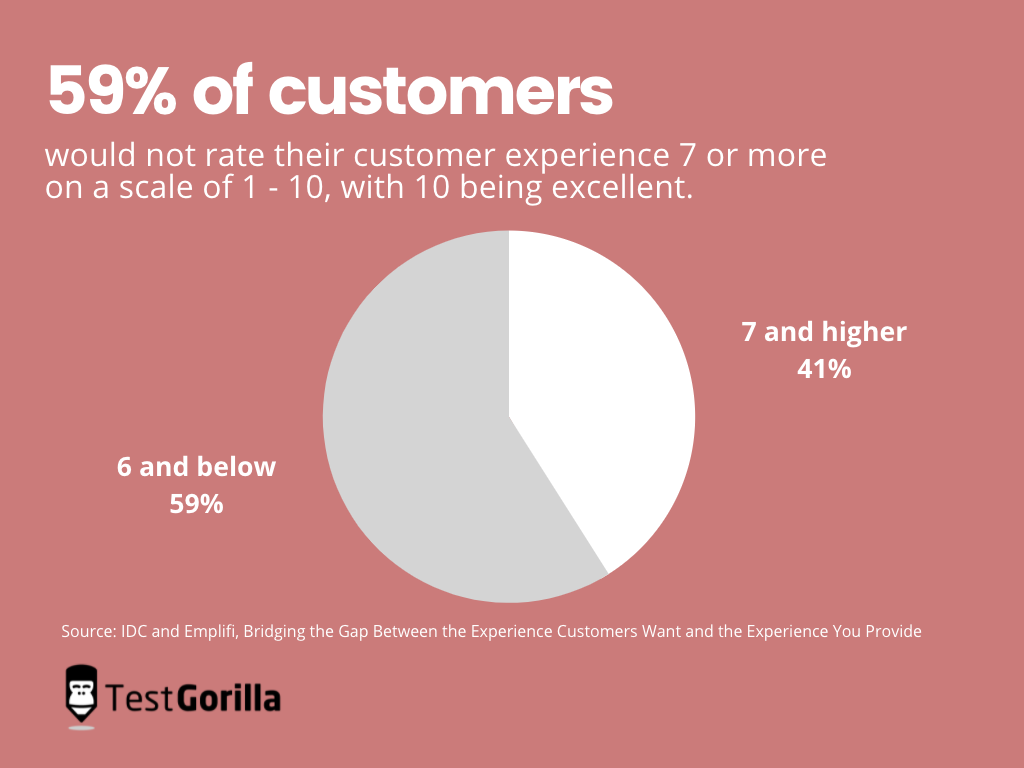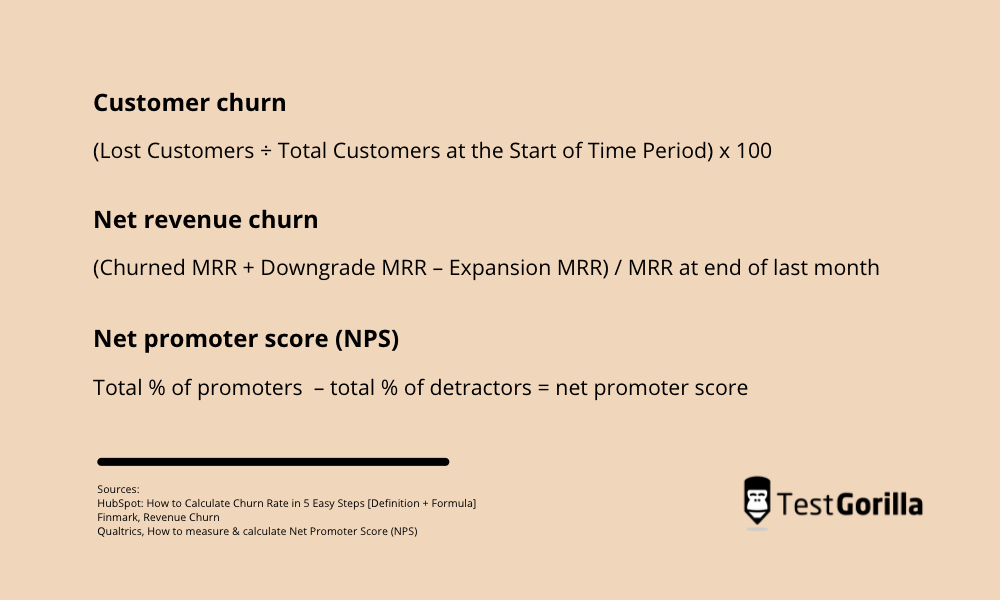Happy clients, happy reps: Create an effective customer success plan
Have you ever wondered why some companies master SaaS customer retention and others don’t? The difference is clear: A realistic customer success plan.
In this article, we’ll dive into what a customer success plan looks like. We’ll look at how a skilled customer success manager (CSM) uses this plan to build the customer experience.
At the end, you’ll get a full customer success playbook that you can edit when you need to. Let’s get started.
What is a customer success plan?
A customer success plan provides a framework for activities that help your SaaS customers reach goals related to using your product. This plan gives a precise layout and high-level overview of five key factors:
Key stakeholders: People who are responsible for certain activities within the company.
Communication strategies: How to send information, who sends it, to whom it’s sent, and when to send it. How to use technology to communicate with customers and lead them through processes.
Internal and external process mapping: Necessary steps to address internal or customer-facing situations.
Customer success goals and milestones: Moments in time and results that show the end of a journey.
Key performance indicators (KPIs): Reporting factors that can be measured in quantitative or numerical ways.
Other names for this plan and what they mean
Joint success plan: Created so CSM can work in tandem with the customer to achieve their goals
Mutual success plan: Holds the customer goals as the focus point
Account success plan: A high-level living document that develops alongside the customer
What’s the difference between customer service and customer success?
Customer service refers to all direct communication between customers and the people in your SaaS company who help them. It involves the reputation your company gains as a result of those interactions.
We know that 57% of customers see good customer service as a reason to be loyal to a brand. Customer service is an important aspect of customer success (CS).
Customer success is the deliberate creation of customer-committed material and opportunities. These resources provide continuous value to customers in thoughtful ways. More than solving problems and providing updates, customer success:
listens to customers’ goals
understands their buyer journey
adapts to their user journey
follows the brand voice
guides the customer through every step of the SaaS product
Customer success encapsulates every stage of the customer experience, including the content customers receive during pivotal moments, such as:
following the customer onboarding
making a purchase
creating an account
navigating the user experience
receiving support
closing an account
Any effective customer success strategy has to provide value for the customer. The only way to identify what customers want is by listening to them.
Without listening, your customer experience may look beautiful and have plenty of modern features, but it won’t give customers the value they’re looking for.
Within your customer success strategy, you should conduct low-touch surveys, schedule regular reviews with high-touch customers, and make it easy for customers to give their feedback at every touchpoint.
Customer success determines the quality of your customer experience
Experience is everything in customer success. After all, 86% of customers would pay more for a better experience.
Managing the expectations of your customers should be handled long before something goes wrong. So while you have time, why not plan for the best possible customer experience?
Here are seven important questions to consider while you develop your customer success strategy:
When do customer success managers and representatives escalate a situation to a different department?
How easy is it for self-service customers to be totally independent?
Can customers reach human support when they need it?
What happens when something breaks or goes wrong?
Where can customers go to find help and resources
How can customers delete their accounts?
What feedback have customers given us?
The answers provide vital information that your customer success team should be able to find in fast, accessible ways.
Why? Because 60% of customers don’t want to wait more than 10 minutes for help.
When customer success managers have easy access to these answers, they will be able to create fast, repeatable solutions that make your customers feel secure.
The best insights on HR and recruitment, delivered to your inbox.
Biweekly updates. No spam. Unsubscribe any time.
What are the measurable benefits of customer success planning?
The answer comes from the actions customers perform in response to their experience. “Providing value” is a positive consideration, but it’s still an abstract or qualitative factor.
Because of this, CS departments in SaaS companies have numerical metrics to prove a real return on investment (ROI).
Here are the top three relevant metrics that validate the ROI of your customer success plan.
Customer churn: The rate at which your customers are leaving
The questions this metric answers:
How many customers leave your business?
When do they leave?
What makes them leave?
Do your customers come back?
Revenue churn: The rate at which revenue is decreasing
The questions this metric answers:
How much revenue is leaving your business?
When does the revenue decrease?
Which customer segment is causing the decrease in revenue?
Can you replace the lost revenue?
Net promoter score (NPS)
The questions this metric answers:
How many customers would promote your business?
Why would they promote it?
Which type of customer is the most likely to promote your business?
How to create a customer success plan
Let’s take a look at the main components of your customer success plan and how it works to create value for your SaaS company.
1 Define the goal of your customer success plan
Any solid plan needs a strategic goal. When this goal is achieved, the plan can be adapted as a template for future goals. There are three parts to defining the goal of your customer success plan.
A. Align with company goals
You can understand overall company goals by having conversations with senior leaders and your data department. These conversations need to deliver the answers to several questions:
What are the most important company KPIs for the year?
How does your CS team help to achieve those KPIs via your milestones?
Which key parts of the company’s strategy should be focused on and at what time?
B. Set customer success team goals
It’s natural that your company wants to prioritize its customers. At the same time, the CS team members must not be neglected.
The humans who show up to stand on the frontlines for your product each day should be well taken care of and feel appreciated.
Leaders should develop realistic expectations of the CS team. The customer success plan should contain clear, balanced goals that consider the wellbeing of the CS team first.
Customer success managers can do several things to create a healthy working environment for the CS team:
Set generous, frictionless time-off procedures to support the CS team’s wellbeing
Encourage and trust CS team members, don’t micromanage them
Build team camaraderie for healthy workplace socializing
Create a time and effort balance for the CS team to address each phase of the user journey
Budget time and resources for wellness opportunities, benefits, and applications
Use technology wherever possible to manage customer relationships
Outline clear expectations for the CS team every month
When the people in your customer success team are thriving, they will show up to work feeling ready for anything.
Every day, they will do everything in their power to come up with creative ways to deliver value to your SaaS customers and help you achieve your company’s goals.
C. Listen to customers’ goals
Customer success goals should be linked to overall company goals. At the same time, customer goals should be listened to and incorporated.
Customer listening is a core part of any customer success plan. It makes sure that your customers are active in helping your SaaS company to improve the customer experience.
For example, if your customer success plan is aimed at increasing the number of advocates, your company should choose a direct way to ask customers:
how your platform has served them
if anything went wrong
how the problem was addressed
what you can do to improve
Customer feedback will guide your customer success plan and help achieve your company goals, as well as your customers’ goals.
2 Identify customer success managers and key stakeholders
Effective CS teams integrate with the rest of the company to deliver solutions to your customers.
To do this in a way that doesn’t cause chaos, the customer success plan should list relevant contacts in each department. For example:
Who does a CS representative escalate crisis situations to?
Who is responsible for your customer success manager?
Who do they speak to if there’s abuse from a customer?
Who gets credit when something goes wrong – or right?
Who is in charge of software fixes?
Who handles accounting?
Imagine the CS team having to stop in the middle of a customer interaction to ask these questions. The time of the call would be significantly increased as they awaited answers. Meanwhile, the customer would be getting more frustrated by the second.
A precise customer success plan will prevent this by listing important company stakeholders. Next to those stakeholders will be the best method of contact.
Such a simple, up-to-date document can save CS representatives hours of time each week. Your customers will be reassured by their ease of access to knowledge and proactive teamwork.
Start your SaaS customer success plan with this free playbook template
An evolving customer success plan creates long-term value for customers, your growing CS team, and your SaaS company.
We made this free, editable customer success playbook to help you develop a customer success plan that considers:
the wellbeing of your customer success team
your company goals
your high-touch and low-touch customers
Here are the nine useful templates you get in our fully editable customer success playbook:
Planned onboarding sequence templates for high- and low-touch customers
New-feature onboarding cycle for paying and free customers
Support team wellbeing strategy
Internal communications strategy
Welcome email sequence brief
Onboarding engagement KPIs
Customer-welcome call script
Self-service sign-up guide
hbspt.forms.create({ region: "na1", portalId: "6821985", formId: "2ee7359c-c977-4c5f-8d3c-2c397b5fed73" });
You've scrolled this far
Why not try TestGorilla for free, and see what happens when you put skills first.























